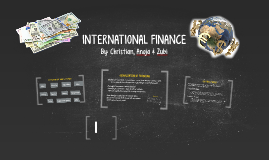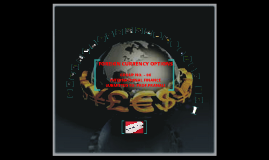International Finance
Transcript: Barings Bank (1762 to 1995) was the oldest merchant bank in London, founded and owned by the German-origined Baring family. The bank collapsed in 1995 after one of the bank's employees, Nick Leeson, lost £827 million ($1.3 billion) due to speculative investing, primarily in futures contracts, at the bank's Singapore office. The $1.3 billion loss incurred by Nick Leeson exceeded Barings Bank's capital, while the much larger losses incurred at JPMorgan only dented that bank's "fortress." Barings was brought down in 1995 due to unauthorized trading by its head derivatives trader in Singapore, Nick Leeson. At the time of the massive trading loss, Leeson was supposed to be arbitraging, seeking to profit from differences in the prices of Nikkei 225 futures contracts listed on the Osaka Securities Exchange in Japan and the Singapore International Monetary Exchange. Instead of buying on one market and immediately selling on another market for a small profit, the strategy approved by his superiors, Leeson bought on one market then held on to the contract, gambling on the future direction of the Japanese markets. since 1990, there have been 16 instances when traders lost at least $1 billion - shareholders suffer losses - counter parties are exposed to potential settlement failure in over-the-counter markets - bank regulators face the prospect of individual insolvencies - systemic problems in the financial market - public is always in difficult situation ... Trading losses ... by Sameh Zoabi Sameh Zoabi The 15 trading losses total nearly $60 billion and range from a low of $1.1 billion on ill-fated foreign exchange derivatives at a Japanese Shell Oil subsidiary to a high of $9 billion on credit default swaps at Morgan Stanley Four of the firms are banks: Société Générale, JPMorgan Chase, UBS, and Deutsche Bank; Two are investment banks: Morgan Stanley, which became a bank the year after the loss,and Barings Bank; To are hedge funds: Amaranth Advisors and Long Term Capital Management; One is local government: Orange County; Six are manufacturing or petrochemical firms. Thank you Barings bank Despite popular perception, trading losses are not unique to the banking industry. In fact, the majority of large trading losses of the past 20 years have occurred at non-banks. Trading losses may also be more problematic for non-banks than for banks. None of the banks that experienced sizeable losses had their solvency seriously jeopardized, and just Société Générale was required to raise outside capital, which it did without difficulty. In contrast, four of the nonbanks were made insolvent (Amaranth Advisors, Barings Bank, LTCM, and Orange County), and two were forced to accept takeover bids from other firms (Aracruz Celulose and CITIC Pacific). Template by Missing Link Images from Shutterstock.com ... In terms of financial instruments: -$19 billion of losses are due to credit derivatives -$12 billion are due to commodity derivatives -$11.9 billion of losses were due to equity derivative trading -$8 billion are due to fixed income derivatives ; - $8 billion were due to foreign exchange trades

















